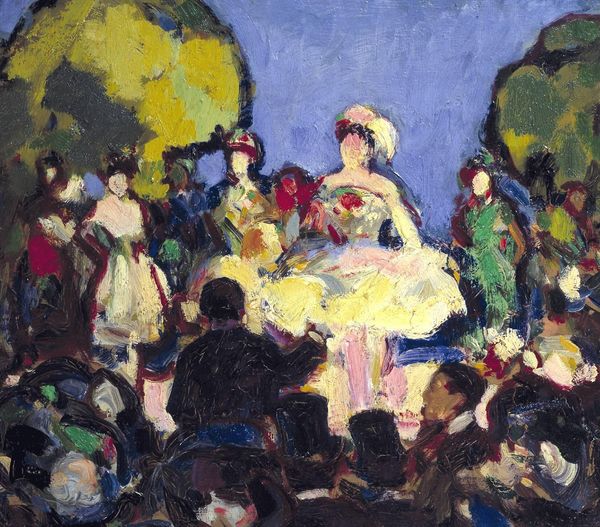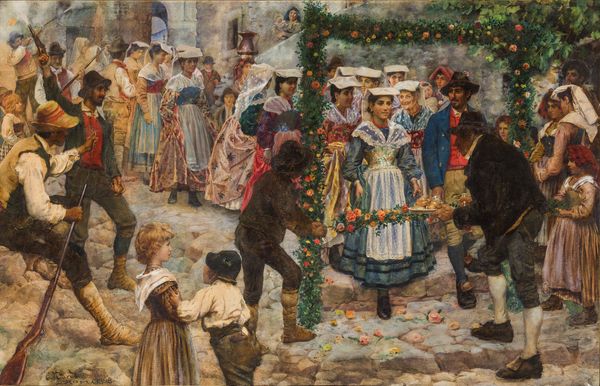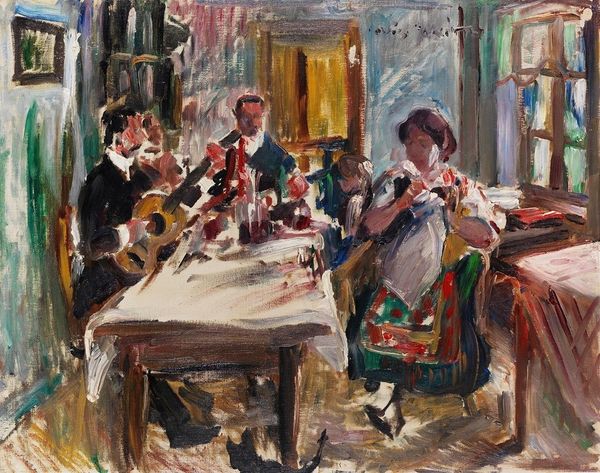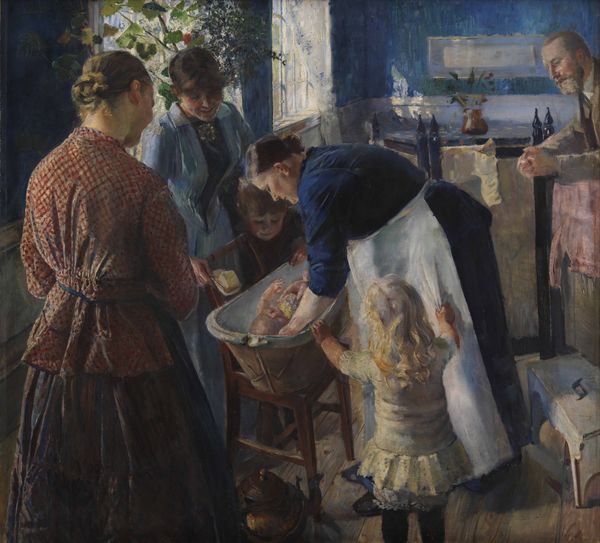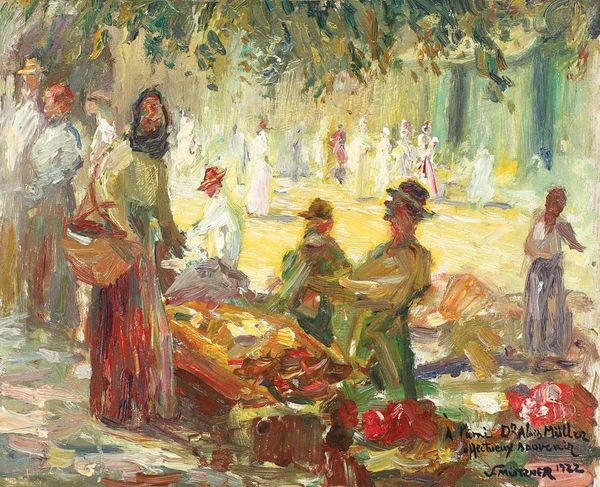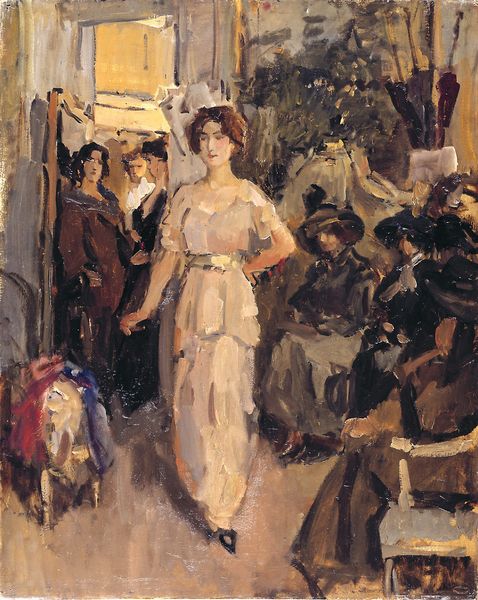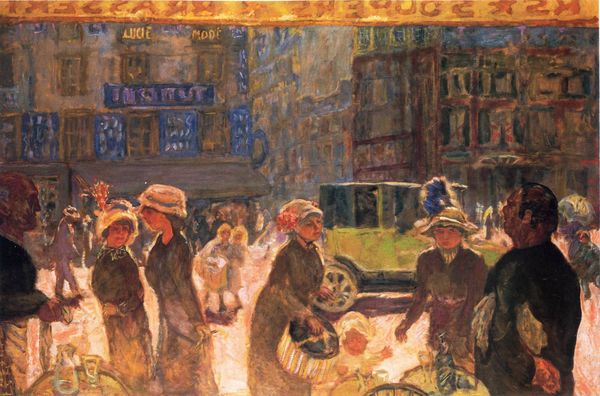
painting, textile, watercolor
#
portrait
#
narrative-art
#
painting
#
textile
#
figuration
#
watercolor
#
genre-painting
#
modernism
Copyright: Zoe Lerman,Fair Use
Editor: So, this is Zoe Lerman’s “Wedding,” created around 1970. It seems to be a watercolor and textile piece depicting a wedding scene, perhaps even genre painting. The colours are so soft and the entire mood feels so joyous! What strikes you when you look at this painting? Curator: Ah, "Wedding"! Yes, it's less a posed portrait and more a stolen moment, a captured breath of Ukrainian joy, perhaps? The figures are present but also seem to float within a dream. Notice the layering of textures and colours, the way she combines the ethereal nature of watercolor with, apparently, the grounding presence of textiles. I feel the emotion. Editor: Textile is a key element. I hadn’t quite connected that element. It’s not something I’ve typically seen in Modernist pieces that aim to represent figuration and portrait. Curator: Exactly. See how she subverts expectations by blurring those boundaries. Is it painting? Is it sculpture? No matter what you might call it, the artist's blending of materials and soft portraitures give this art a folk charm, doesn’t it? It is as though one is intruding in the most happy day of some Ukrainian people, maybe an Ukrainian wedding party. What kind of impression do you think that might make on you and a typical art consumer in the late 20th Century? Editor: That's interesting because folk elements often make art consumers connect to it in new and various ways, feeling empathy toward different cultures! I am sure viewers would love this painting. Thank you for helping me notice that! Curator: Indeed. And consider the historical backdrop—modernism grappling with tradition, seeking new forms of expression. Zoe gave an opportunity to bridge the new with the old, which, I believe, contributed to shaping contemporary tastes, even if only a little. Thank you for the illuminating and refreshing insight!
Comments
No comments
Be the first to comment and join the conversation on the ultimate creative platform.


